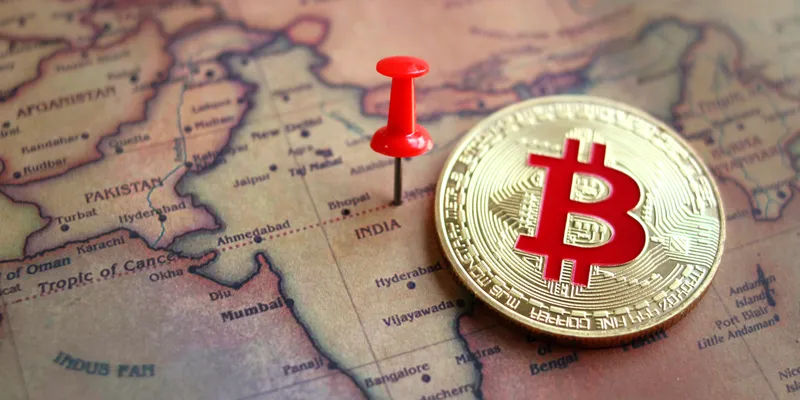Web3 sector calls for stronger regulation of centralised crypto players, more decentralisation in 2023
With the downfall of FTX, the Web3 segment is pitching for stronger regulations for such centralised crypto players in 2023. Simultaneously, they expect more uptake of decentralised apps and networks, which are self-regulating through trustless, self-executing code.
Providing insight into the fall of crypto exchange in 2022, JP Morgan last month identified centralised players as the root cause.
The banking giant added that recent crypto collapses have not been from decentralised protocols, but from centralised crypto players.
With this, the Web3 industry worldwide is expecting accelerated crypto regulations across jurisdictions in 2023.
At the same time, it is also batting for increased innovation and adoption of decentralised infrastructure, to offer more transparent and secure ways to trade and manage digital assets.
Regulating centralised players
Government regulations seem impossible for truly decentralised protocols, and they are. This is why Indian and global Web3 stakeholders are not asking for regulating decentralised networks.
Instead, they are pitching for stronger regulations for centralised crypto players, which are prone to misuse of funds by the few who control them.
Simultaneously, they expect more uptake of decentralised apps and networks, which are self-regulating through trustless, self-executing code.
In a recent blog post, Coinbase CEO and Co-founder Brian Armstrong wrote:
“The role of financial regulators should be limited to centralised actors in cryptocurrency, where additional transparency and disclosure are needed. In an on-chain world, this transparency is built in by default, and we have an opportunity to create even stronger protections.”
Crypto regulations for centralised players can only come from government authorities, and they are designed to protect consumers and ensure that these technologies are used in a fair and transparent manner.
They also provide clarity and guidance for businesses that are using or developing Web3 technologies.
“In 2023, it will be the responsibility of players in the crypto and Web3 ecosystem to foster a sense of security among its consumers. Putting the right protocols and practices in place to avoid the impact of black swan events will be crucial to success,” said Raj Karkara, COO at , a centralised exchange.

US vs Indian outlook on crypto
The Securities and Exchange Commission (SEC) in the US has stated that some cryptocurrencies are “securities”, and therefore can be regulated by it.
In other words, if a crypto or Web3 company in the US is building a product to give the crypto token a value, the SEC may consider it a security.
However, not all crypto tokens are securities. They can be utility tokens, governance tokens, and more, and they can be issued by decentralised firms registered outside the US, thereby falling outside the SEC’s purview.
In India, all crypto tokens are regulated as Virtual Digital Assets (VDAs), and crypto income is taxed at 30%. Along with a 1% Tax Deducted at Source (TDS) mandate, the crypto tax mandate in India has led to steep declines in trading activity on domestic exchanges.
Leading Indian exchanges such as and have diversified into new products (such as a DeFi app and multi-exchange trading platform, respectively). They claim these efforts were already in the works well before India’s crypto tax mandate.
The other leading Indian exchange, WazirX, remains focussed on improving its user’s crypto trading experience, and has not diversified or added new streams of potential revenue for 2023.
Nevertheless, the consensus across the Web3 industry is that 2023 will see more mainstream adoption of decentralised apps (and the crypto tokens that power them).
“In 2023, there needs to be practical decentralisation, and not just an ethos of decentralisation. Wherever it makes sense, there need to be easy ways for more people to participate as validators and nodes in blockchain networks,” said Anantha RK, Founder and CEO at Sarva Labs.

Building for the next bull run: How Indian crypto exchanges are weathering the storm
Uptake of decentralised, Web3 tech
According to Aniket Jindal, Co-founder at , the drive for usable UX and mass adoption of Web3 will continue despite the market downturn.
“We will see a strong push towards self-custody, guardrails for authentication, and more sophisticated governance for Web3 financial operations to ring-fence assets for users and projects. 2023 will show whose infrastructure holds up to volatility,” he said.
Further, the transition of Ethereum, the most popular blockchain for building decentralised apps, from the energy-intensive Proof of Work (PoW) consensus mechanism to the 99% more energy-efficient Proof of Stake (PoS) system will be another critical driver for Web3 adoption,
Leon Foong, Head of APAC, Binance, said, “The Ethereum upgrade was one of the major developments in the crypto industry, making the blockchain more scalable, secure, and sustainable, paving the way for more efficient decentralised applications to be built.”
Additionally, while the furore created by Facebook’s rebranding to Meta in late 2021 and the expected adoption of metaverse technology fell flat in 2022, there may be room for Web3 technology to make its mark on the metaverse.
Kaavya Prasad, Founder, Lumos Labs, said, “A highly anticipated trend for the next year would be the expansion of Web3 in the metaverse. We are seeing major Web2 companies investing heavily in the metaverse, and have been adopting NFTs and DeFi through tokenised products, digital avatars, virtual retail stores, virtual concerts, music NFTs, etc.”
Going forward, enforcement of any crypto policy frameworks remains the biggest hurdle for governments, irrespective of whether the crypto is used in a trading exchange, decentralised protocol, or metaverse application.

International cooperation for crypto regulation
Ultimately, all crypto users are national citizens of their particular country, and crypto regulators and law enforcement agencies have only been focused on their domestic markets. So far, none of them have an international mandate.
Earlier in July 2022, Indian Finance Minister Nirmala Sitharaman admitted,
“Cryptocurrencies are by definition borderless and require international collaboration to prevent regulatory arbitrage. Therefore, any legislation for regulation or for banning can be effective only after significant international collaboration on evaluation of the risks and benefits and evolution of common taxonomy and standards.”
Unless regulatory frameworks for crypto are enforced evenly domestically and abroad, there won’t be a path forward, argued Brian Armstrong in his blog.
“Mostly, they [regulators] don't have an international mandate, or capability to go regulate/investigate companies that are offshore. Where do they send the legal notice if the entity is not registered? What door do they go knock on?” he wrote.
The only way for Web3 and crypto to achieve mainstream adoption, it appears, is for regulators around the world to come together to not only regulate local crypto firms but also entities serving their citizens from abroad.
Edited by Teja Lele







